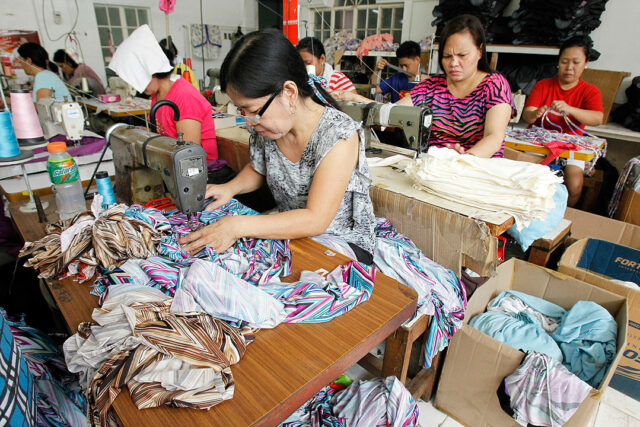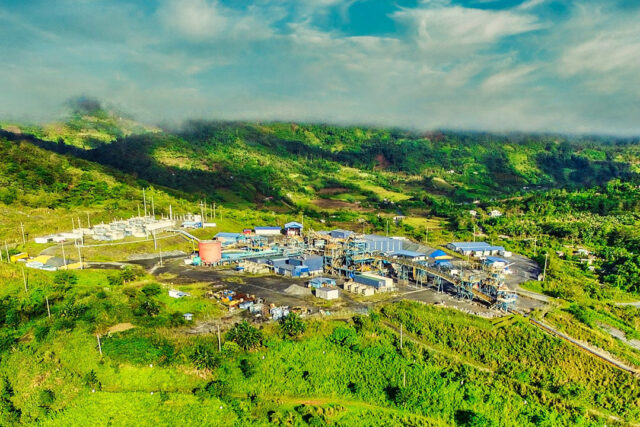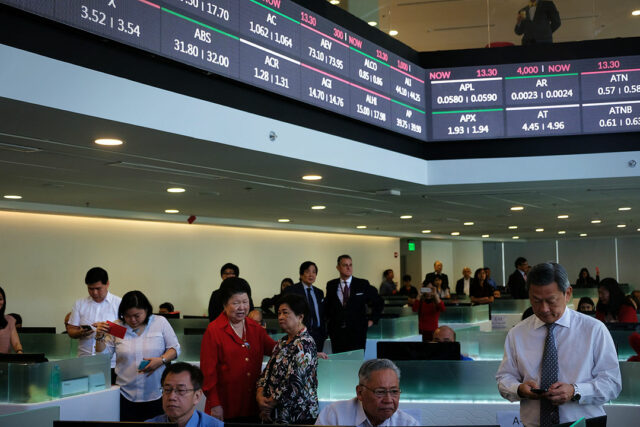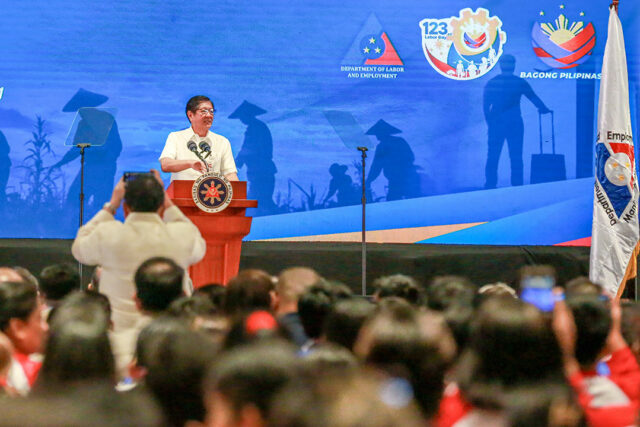By Kenneth Christiane L. Basilio, Reporter
CHINA’S coast guard said it conducted law enforcement patrols around the disputed Scarborough Shoal and nearby waters in the South China Sea on Wednesday.
The coast guard said it had strengthened patrols since the start of April, and carried out tracking, surveillance and interception operations “in accordance with laws and regulations,” according to a report from a Chinese military news website.
It said it had warned and expelled “illegal vessels” that veered within its waters to protect China’s sovereignty and interests, China Military Online reported late Wednesday.
“Since April, the CCG (China Coast Guard) has continuously strengthened law enforcement patrols in the territorial waters of China’s Huangyan Dao (Scarborough Shoal) and its surrounding areas,” the coast guard said.
Spokespersons of the Philippines’ Foreign Affairs department, military and coast guard did not immediately reply to separate Viber messages seeking comment.
Tensions between the Philippines and China over the South China Sea have worsened in the past year as Beijing continues to assert its sweeping claims, including on Scarborough Shoal, a key fishing ground claimed by both nations that it has controlled since 2012.
The shoal is 240 kilometers west of the main Philippine island of Luzon and is about 900 kilometers from Hainan, the nearest major Chinese landmass.
The Philippines took the dispute over Scarborough Shoal to a United Nations-backed tribunal in 2013, which ruled in 2016 that China had interfered with Filipino fishermen’s rights to access the area. Beijing has since deployed a fleet of coast guard vessels to enforce its claim despite the ruling.
Chinese patrols around Scarborough Shoal coincide with annual joint combat drills by Philippine and US forces, aimed at improving interoperability and preparedness to address shared regional security concerns. Beijing has said the drills are provocative.
More than 14,000 Filipino and American soldiers are participating in the Balikatan (shoulder-to-shoulder) exercise, which are held in areas of the Philippine facing regional flashpoints like the South China Sea and Taiwan and feature advanced US missile systems. It began on April 21 and will run until May 9.
The combat exercises will see their forces rehearse how to repel an invasion and assert control over vital maritime structures in the western and northern Philippines.
“Coming up next week, we will continue our full battle test to validate crisis response procedures, defense plans and our bilateral coordination from the operational level all the way down to the tactical edge,” US Lieutenant General Michael S. Cederholm, commander of the I Marine Expeditionary Force, told a news briefing at the Philippine military’s headquarters on Wednesday.
‘NOT JUST AN EXERCISE’
Started in 1991, the Balikatan exercise has evolved into Southeast Asia’s premier combat rehearsal as the Philippines and US seek to strengthen security cooperation and enhance force interoperability in response to China’s growing assertiveness in the region.
“It is not just an exercise,” Philippine Brigadier General Michael G. Logico, assistant exercise director for this year’s Balikatan exercises, told the same briefing. “It also provides a broader message to the rest of the region… that we are here to maintain stability within the region.”
The South China Sea has become a flashpoint in Southeast Asia as China continues to assert sovereignty over almost the entire sea, seen as a vital global trade route that is also believed to be mineral-rich.
“The unique location of the Philippines makes it crucial to international trade,” Mr. Logico said.
The US has deployed its advanced missile systems for the drills, including a mobile anti-ship missile system, a portable artillery rocket system, a mid-range capability missile battery and a short-range air defense platform.
Asked if the anti-ship Navy-Marine Expeditionary Ship Interdiction System (NMESIS) would be kept in the country after the joint combat drills, Mr. Cederholm said: “I don’t talk about when we go out.”
“These are capabilities that the US Marine Corps and the Army are introducing all over the Pacific,” he said. “They accompany units, and when those units rotate back, the capabilities may stay or they may go with them.”
“We only keep weapon systems with the approval of the Philippine government.”
Last year, the US left an intermediate-range missile system called the Typhon Mid-Range Capability (MRC), which can launch missiles that can reach the Chinese mainland, in the Philippines after the 2024 Balikatan exercise. The deployment and its subsequent stay in the country has since drawn sharp criticism from Beijing.
Mr. Logico said the Philippines is looking at letting its anti-ship cruise missile system participate in combat drills once India completes its deliveries.
“It is our ultimate goal, once the delivery of the BrahMos system has been complete, that we will integrate that with either the NMESIS or the MRC for its full, combined exercises,” he said.
The Philippines placed three orders for Indian-made BrahMos cruise missile batteries worth $375 million (P21 billion) in 2022 as part of its military modernization efforts, and received the first batch last year. It will soon take delivery of a second batch after it was shipped late last month.
The BrahMos missile system, with a range of 290 kilometers, can achieve supersonic speeds and can be launched from submarines, ships, aircraft or land-based platforms.
Meanwhile, the Armed Forces of the Philippines (AFP) plans to launch a new command later this year to oversee combat exercises with allies, as it seeks to bolster defense coordination amid evolving security challenges, its spokesperson Francel Margareth Padilla-Taborlupa told reporters on the sidelines of the briefing on Wednesday.
Called the AFP Strategic Command, military chief Romeo S. Brawner, Jr. said last week it would coordinate combat drills with allies and is patterned after Japan’s Joint Operations Command structure.
“We are doing three things: We are collaborating, calibrating and coiling like a spring,” she said. “With the creation of this command, we are getting ready [for] any eventuality.”




















